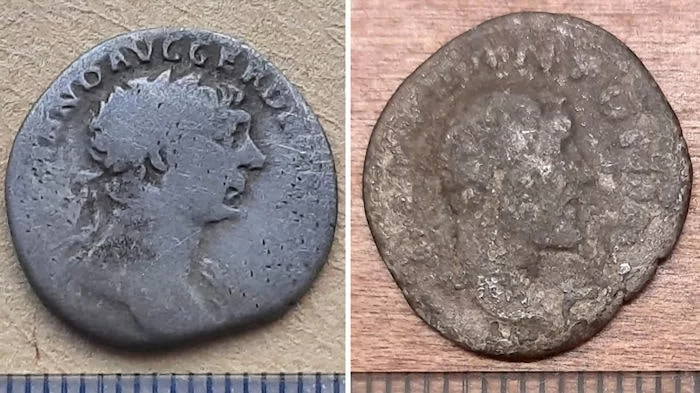Found on an unpopulated island close to Stockholm.
Archaeologists recently discovered two Roman coins along an uninhabited island in the Baltic Sea. Gotska Sandön lies halfway between Estonia and Sweden. This discovery has researchers attempting to unravel how the coins arrived on the seemingly uninhabited site.
A team from Stockholm’s Södertörn University discovered evidence of fire sites on the island and soon found the two small coins. Weighing roughly four grams, each coin is Roman denarii, the Roman Empire’s currency.
Although they are both denarii, a currency commonly used in Ancient Rome, they differ in terms of which emperor they were minted under. One coin is from Emperor Trajan’s reign from 98-117 AD, while the other is from Emperor Antoninus Pius’ reign from 138-161 AD. Each coin was minted by its respective emperor and thus carried the face of either Trajan or Antoninus Pius.
During the Roman period, one denarius was the equivalent of one day’s wages for manual laborers such as farmers, miners, construction workers, and other unskilled workers. This was the standard payment rate for these workers and remained the same for many centuries.
The denarius was the most common form of currency during the Roman period, and it was used to purchase goods and services and pay taxes. Its value was determined by the number of precious metals used to mint the coins, such as silver and gold. The denarius was a valuable currency heavily relied upon in the Roman economy.
The Island
Gotska Sandön is a remote Swedish island located in the Baltic Sea. It is believed to have been uninhabited aside from lighthouse keepers during the 19th century, with no evidence of any prior settlements or communities before this period. There are no permanent towns or villages on the island, and it remains largely untouched by human development. The island is home to many unique species of plants and animals and is a popular destination for nature lovers and hikers.
Seal hunters and fishermen have recently frequented the island during the summer but are unlikely to have carried 2,000-year-old Roman coins along their journey. Researchers have proposed several theories about how the coins might have arrived on the island.
One possibility is that the coins had been carried ashore by survivors of a shipwreck. Alternatively, it is also a possibility that Romans on a Roman ship, possibly sailing up to Scotland, may have taken the coins to Gotska Sandön.
References
[i] Tom Metcalfe, Mystery of Roman coins discovered on shipwreck island has archaeologists baffled (Apr. 13, 2023)
[ii] Britannica, Introduction of the denarius (May 27, 1999)
[iii] Sveriges national parker, Gotska Sandön National Park (2023)





